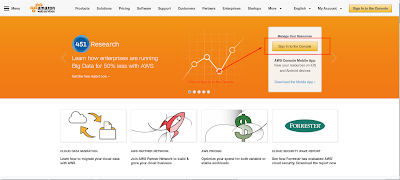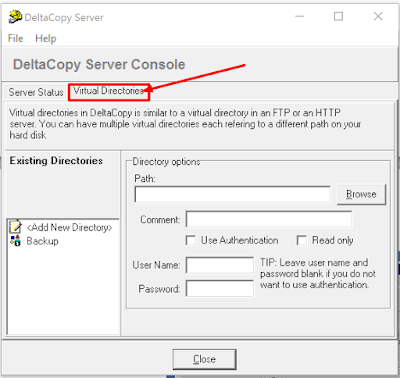AWS: Launching Windows Instances
Overview
The instance is an Amazon EBS-backed instance . You can specify the Availability Zone for which your instance to be created, or let Amazon will select an Availability Zone automatically. When you launch your instance, we can secure it by specifying a new key pair or existing key pair and security group. When ever you connect to your instance, you must specify the same private key pair that you specified when launching your instance.
To complete this tutorial, perform the following tasks:
- Launch an Instance.
- Connect to Your Instance.
- Clean Up Your Instance.
Before you begin, be sure that you've completed the steps in Setting Up with Amazon EC2.
Launch an Instance
You can launch a Windows instance using the AWS Management Console as described in the following procedure. This tutorial is intended to help you launch your first instance quickly, so it doesn't cover all possible options.
To launch an instance
2. Sign into the console using your credentials.
3. Click in the EC2.
4. From the Launch Bar Select the region where you want to create the Instance and from console dashboard, choose Launch Instance.
5. The Choose an Amazon Machine Image (AMI) page displays a list of basic configurations, called Amazon Machine Images (AMIs), that serve as templates for your instance. Select the AMI for Microsoft Windows Server 2012 R2 Base or Microsoft Windows Server 2008 R2 Base. Notice that these AMIs are marked "Free tier eligible."
6. On the Choose an Instance Type page, you can select the hardware configuration of your instance. Select the t2.micro type, which is selected by default. Notice that this instance type is eligible for the free tier.
Note : T2 instances, such as t2.micro, must be launched into a VPC. If your AWS account supports EC2-Classic and you do not have a VPC in the selected region, the launch wizard creates a VPC for you and you can continue to the next step. Otherwise, the Review and Launch button is disabled and you must click Next: Configure Instance Details and follow the directions to select a subnet.
8. On the Review Instance Launch page, under Security Groups, you'll see that the wizard created and selected a security group for you. You can use this security group, or alternatively you can select the security group that you created when getting set up using the following steps:
a) Choose Edit security groups.
b) On the Configure Security Group page, ensure that Select an existing security group is selected.
9. Select your security group from the list of existing security groups, and then choose Review and Launch.
10. On the Review Instance Launch page, choose Launch.
11. When prompted for a key pair, select Choose an existing key pair, then select the key pair that you created when getting set up.
Alternatively, you can create a new key pair. Select Create a new key pair, enter a name for the key pair, and then choose Download Key Pair. This is the only chance for you to save the private key file, so be sure to download it. Save the private key file in a safe place. You Will need to provide the name of your key pair when you launch an instance and the corresponding private key each time you connect to the instance.
IMPORTANT: Don't select the Proceed without a key pair option. If you launch your instance without a key pair, then you can't connect to it.
13. A confirmation page lets you know that your instance is launching. Choose View Instances to close the confirmation page and return to the console.
14. On the Instances screen, you can view the status of the launch. It takes a short time for an instance to launch. When you launch an instance, its initial state is pending. After the instance starts, its state changes to running and it receives a public DNS name. (If the Public DNS column is hidden, choose the Show/Hide icon in the top right corner of the page and then select Public DNS.)
15. It can take a few minutes for the instance to be ready so that you can connect to it. Check that your instance has passed its status checks;you can view this information in the Status Checks column.
Keywords:AWS, AWS Windows Instance, AWS Terminate, AWS Launch Windows, AWS Connect Windows Instance, Connect, Terminate Instance

















Comments
Post a Comment